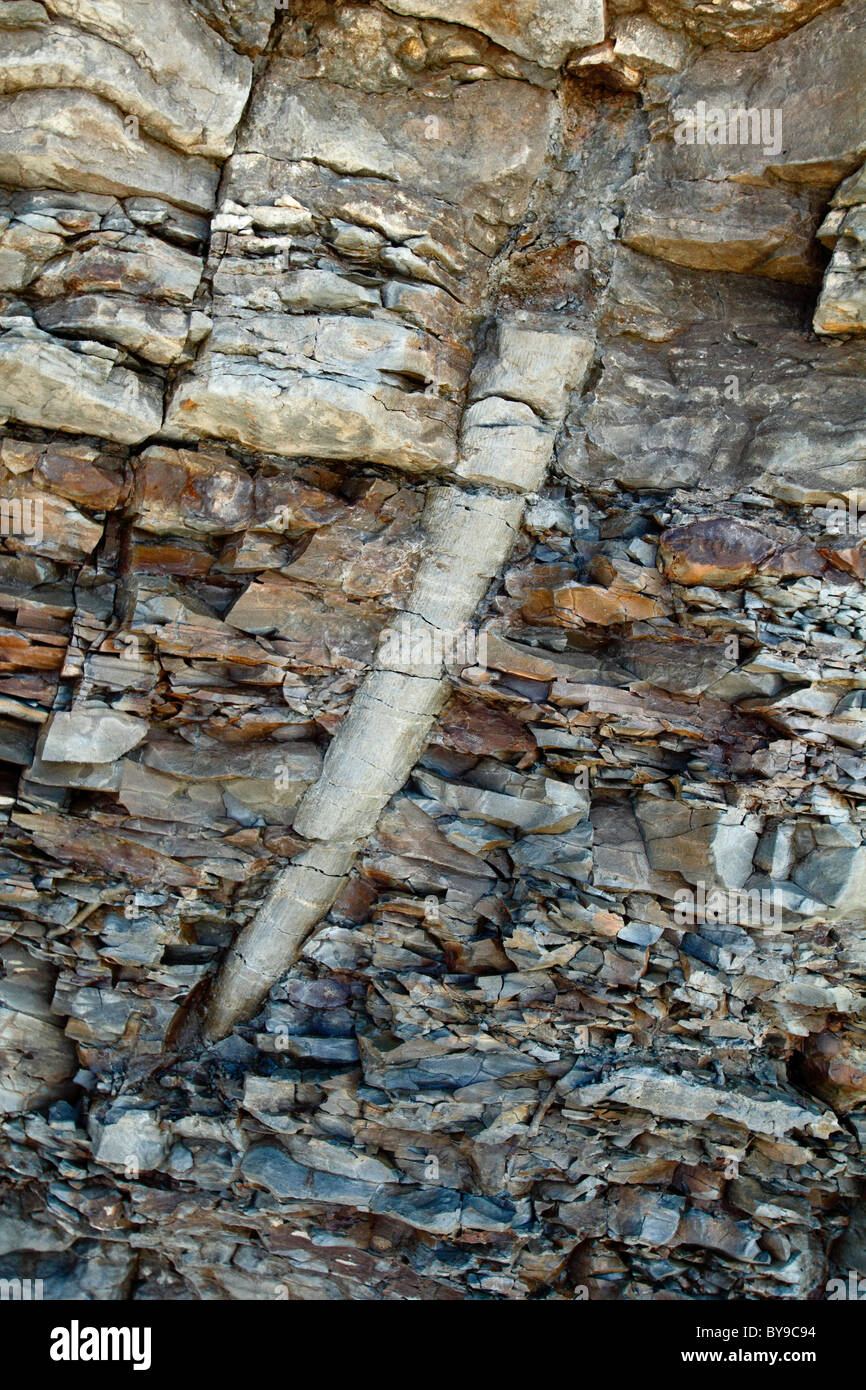A giant tree fossil in a cliff at Joggins Fossil Cliffs, Nova Scotia, Canada

Image details
Contributor:
gary corbett / Alamy Stock PhotoImage ID:
BY9C94File size:
51.2 MB (3.6 MB Compressed download)Releases:
Model - no | Property - noDo I need a release?Dimensions:
3455 x 5184 px | 29.3 x 43.9 cm | 11.5 x 17.3 inches | 300dpiDate taken:
27 August 2010Location:
Joggins Nova Scotia CanadaMore information:
Joggins is famous for its record of fossils dating to the Pennsylvanian "Coal Age" of earth history, approximately 310 million years ago. The dramatic coastal exposure of the Coal Age rocks, known as the Joggins Fossil Cliffs, are continually hewn and freshly exposed by the actions of the tides in the Cumberland Basin. Geologists were first attracted to this locality in the late 1820s with Abraham Gesner, Richard Brown, Thomas Jackson and Francis Alger all making important observations.[4] A little later, a party from Williams College, Massachusetts became the first student party to study Joggins for educational reasons in 1835[5]. However, the true fame of Joggins dates to the mid-nineteenth century and the visits in 1842 and 1852 by Charles Lyell, the founder of modern geology and author of Principles of Geology. In his Elements of Geology (1871), Lyell proclaimed the Joggins exposure of Coal Age rocks and fossils to be "the finest example in the world".[6] The fossil record at Joggins figures in Charles Darwin's On the Origin of Species, and played a role in the Great Oxford Debate of 1860 between Bishop Wilberforce and Thomas Huxley. Much of the early work to document the fossil record at Joggins was by Nova Scotian geologist Sir William Dawson (1820–1899), who had a close personal and working relationship with his friend and mentor Charles Lyell. Much of Dawson's collection resides at the Redpath Museum of McGill University. Other notable nineteenth century geologists who worked at Joggins include Abraham Gesner, inventor of kerosene, and William Logan, who measured the cliffs bed by bed for the Geological Survey of Canada. Imprint of a fossilized root found near the cliffs at Joggins, Nova Scotia.In 1852 Lyell and Dawson made a celebrated discovery of tetrapod fossils entombed within an upright tree at Coal Mine Point. Subsequent investigations by Dawson led to the discovery of one of the most important fossils in the history of science, Hylonomus lyelli